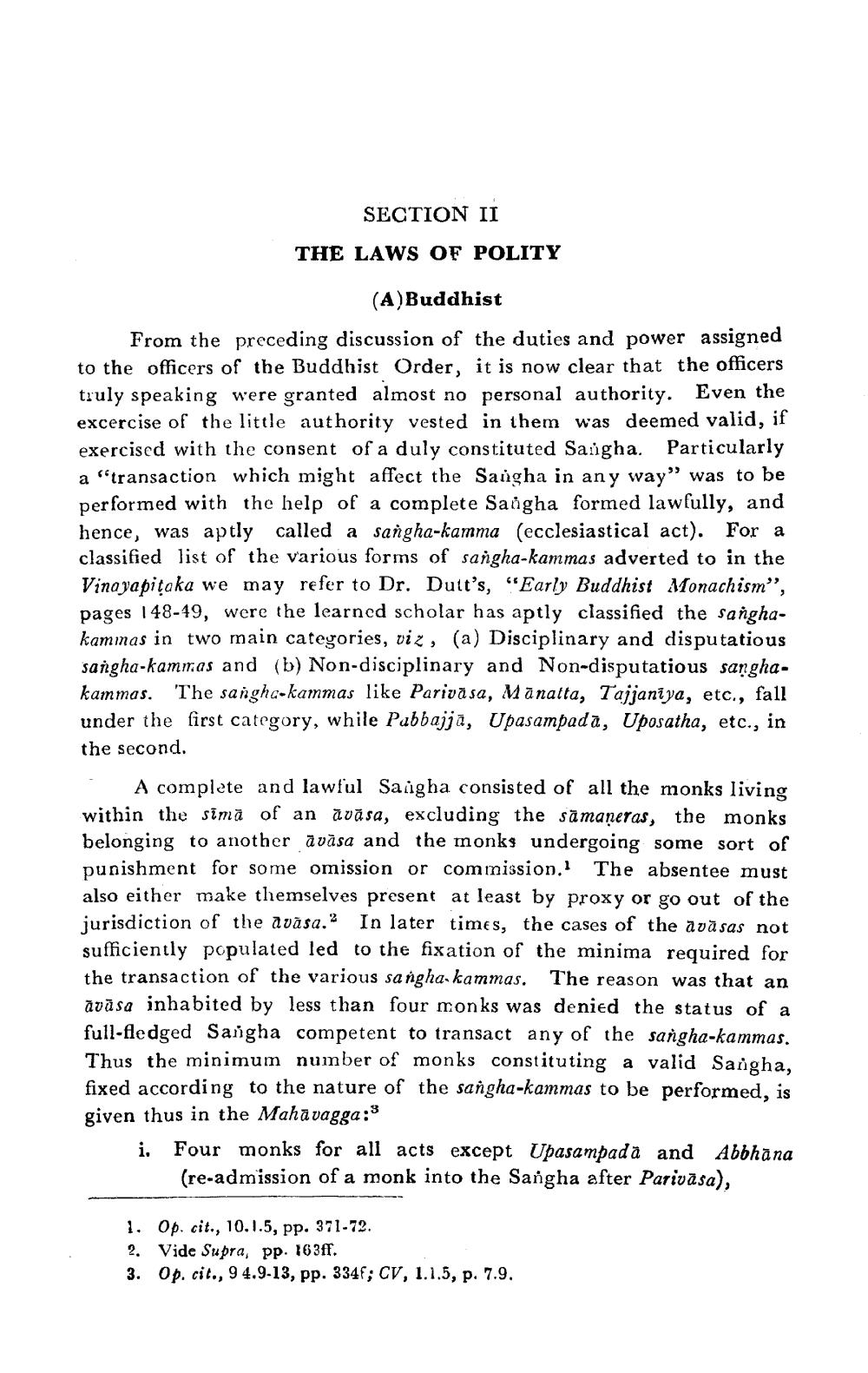________________
SECTION II THE LAWS OF POLITY
(A)Buddhist From the preceding discussion of the duties and power assigned to the officers of the Buddhist Order, it is now clear that the officers truly speaking were granted almost no personal authority. Even the excercise of the little authority vested in them was deemed valid, if exercised with the consent of a duly constituted Sangha. Particularly a "transaction which might affect the Sangha in any way" was to be performed with the help of a complete Sangha formed lawfully, and hence, was aptly called a sangha-kamma (ecclesiastical act). For a classified list of the various forms of sangha-kammas adverted to in the Vinayapitaka we may refer to Dr. Dutt's, "Early Buddhist Monachismo, pages 148-49, were the learned scholar has aptly classified the sanghakammas in two main categories, viz, (a) Disciplinary and disputatious sangha-kammas and (b) Non-disciplinary and Non-disputatious sanghakammas. "The sangha-kammas like Parivāsa, Manatta, Tajjaniya, etc., fall under the first category, while Pabbajja, Upasampada, Uposatha, etc., in the second
A complete and lawful Saligha consisted of all the monks living within the simā of an ävāsa, excluding the samaneras, the monks belonging to another avisa and the monks undergoing some sort of punishment for some omission or commission. The absentee must also either make themselves present at least by proxy or go out of the jurisdiction of the avāsa. In later times, the cases of the avāsas not sufficiently populated led to the fixation of the minima required for the transaction of the various sangha-kammas. The reason was that an āvāsa inhabited by less than four monks was denied the status of a full-fledged Sangha competent to transact any of the sangha-kammas. Thus the minimum number of monks constituting a valid Sangha, fixed according to the nature of the sangha-kammas to be performed, is given thus in the Mahāvagga:3 i. Four monks for all acts except Upasampada and Abbhāna
(re-admission of a monk into the Sangha after Parivāsa),
1. Op. cit., 10.1.5, pp. 371-72. 2. Vide Supra, pp. 163ff. 3. Op. cit., 94.9-13, pp. 334f; CV, 1.1.5, p. 7.9.




